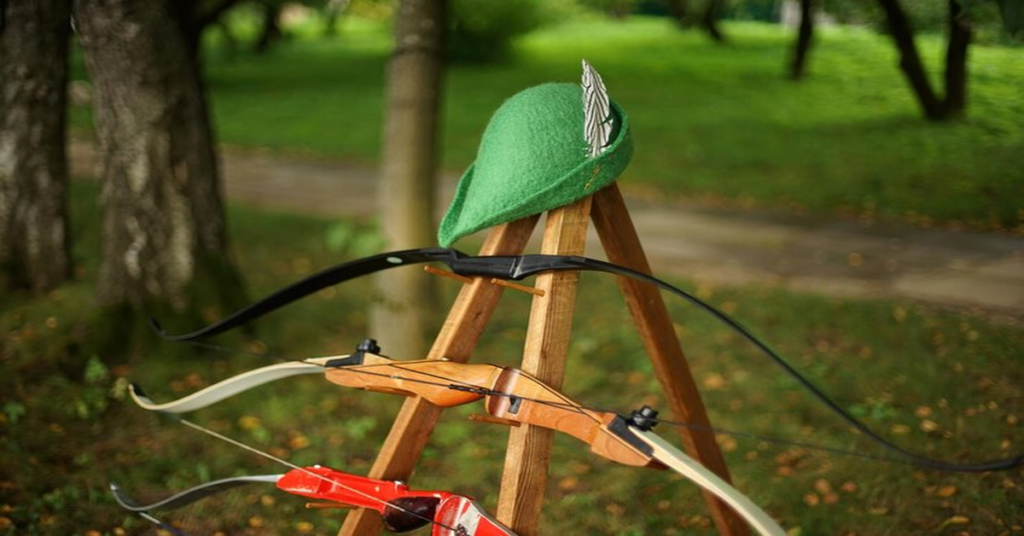The crossbow is a fascinating and powerful weapon with a rich history that spans thousands of years. From its origins in ancient China and Greece to its use in medieval warfare and modern-day sports, the crossbow has undergone tremendous evolution. It is a unique blend of bow and mechanical trigger, combining precision, force, and usability.
In this comprehensive guide, we will explore the history, mechanics, types, applications, and legal considerations of crossbows. We will also examine their role in hunting, sport, and warfare, providing a well-rounded understanding of one of humanity’s most enduring projectile weapons.
The History of the Crossbow
Ancient Origins
The earliest records of crossbows date back to 5th century BCE China during the Warring States period. Chinese military texts described them as revolutionary weapons with the ability to pierce armor and inflict substantial damage from a distance. These early crossbows were simple but effective, featuring horizontal bows mounted on wooden stocks.
Greece also saw the emergence of similar weapons around the 4th century BCE, most notably the gastraphetes, a hand-held crossbow-like device used in sieges.
Crossbows in Medieval Europe
Crossbows gained prominence in Europe during the medieval period. They were favored for their ease of use compared to longbows, allowing less trained soldiers to become effective archers. European crossbows evolved to use steel prods (the bow part) and sophisticated winding mechanisms like the windlass or cranequin for cocking.
Renaissance and Decline in Military Use
By the Renaissance, firearms began to dominate the battlefield, leading to a decline in the crossbow’s military use. However, they remained popular among hunters and were valued for their silence and accuracy.
Mechanics and Components of a Crossbow
Key Components
A crossbow consists of several main components:
- Prod: The bow or limb, responsible for generating force.
- Stock: The main body that holds the prod and trigger mechanism.
- String: Connects the two ends of the prod and propels the bolt.
- Trigger mechanism: Allows the user to release the cocked string precisely.
- Sight: Helps aim accurately.
- Stirrup: A foot-loop at the front to help cock the bow.
How It Works
To shoot a crossbow, the user cocks the string (usually using a lever, crank, or manually), places a bolt on the track, aims, and pulls the trigger. The string releases the stored energy from the limbs, propelling the bolt forward.
Types of Crossbows
Recurve Crossbow
The recurve crossbow has limbs that curve away from the shooter. This traditional design allows for a simpler build with fewer moving parts. Recurve crossbows are lighter and quieter but require more strength to cock.
Compound Crossbow
This modern variant uses a system of cams and cables to reduce draw weight and increase power. Compound crossbows are highly efficient, offering faster arrow speeds and easier cocking.
Pistol Crossbow
Smaller and less powerful, pistol crossbows are compact and often used for recreational shooting or small game hunting.
Reverse Draw Crossbow
The limbs face backward, positioning the string closer to the shooter. This design improves balance, reduces noise, and increases power.
Applications of Crossbows
Hunting
Crossbows are widely used in hunting due to their accuracy, stealth, and power. Many regions regulate crossbow hunting to certain seasons or game types. Modern crossbows can take down large game like deer and elk with ease.
Target Shooting and Sport
Crossbow shooting is a competitive sport with organized events and leagues worldwide. It is part of the International Crossbow Shooting Union (IAU) and features in events like the World Crossbow Championship.
Survival and Self-Defense
Some preppers and survivalists include crossbows in their emergency gear due to their silence, reusability, and effectiveness. While less common, crossbows have been used in self-defense scenarios.
Military and Law Enforcement
While largely obsolete in modern warfare, specialized military units and law enforcement agencies occasionally use crossbows for tasks like silently disabling security systems or deploying lines.
Advantages and Disadvantages
Pros
- High accuracy: Excellent for precise targeting.
- Low noise: Ideal for stealth hunting.
- Ease of use: Simpler to master compared to traditional bows.
- Power: Capable of taking down large game.
Cons
- Heavier and bulkier: Less maneuverable.
- Slower rate of fire: Reloading takes time.
- Mechanical complexity: More parts mean more potential maintenance.
Crossbow vs. Traditional Bows
| Feature | Crossbow | Longbow/Recurve Bow |
|---|---|---|
| Learning Curve | Easier | Steeper |
| Rate of Fire | Slower | Faster |
| Accuracy | High | High with skill |
| Portability | Less portable | More portable |
| Power | High | Varies |
Crossbows are preferred by many beginners and hunters for their ease of use and accuracy, while traditional bows remain favored in archery for their faster shots and elegant simplicity.
Safety and Maintenance
Safety Guidelines
- Always point in a safe direction.
- Use proper backstops when target shooting.
- Never dry-fire (fire without a bolt) as it can damage the weapon.
- Wear safety gear like finger guards and arm guards.
Maintenance Tips
- Regularly inspect the string and cables.
- Wax the string to reduce wear.
- Store in a dry place to prevent rust.
- Lubricate the rail and trigger mechanism as needed.
Legal Considerations
United States
Crossbow regulations vary by state. Some states allow crossbow use during all archery seasons, while others restrict it to certain groups (e.g., disabled hunters or older individuals).
United Kingdom
In the UK, crossbows are legal but regulated. You must be at least 18 years old to purchase or own one. Hunting with a crossbow is prohibited.
Other Countries
- Canada: Legal with some hunting restrictions.
- Australia: Varies by state; some require licenses.
- Germany: Requires a license for hunting.
Always check your local laws before purchasing or using a crossbow.
Innovations and the Future of Crossbows
Technological Advancements
Modern crossbows feature innovations like:
- Carbon fiber components for reduced weight
- Advanced scopes with rangefinding abilities
- Integrated cocking aids and silent safety systems
Sustainable Use and Ethics
As interest in ethical hunting grows, crossbows are being promoted as a humane and sustainable option due to their precision and control.
Conclusion
The crossbow remains a remarkable weapon and tool that has stood the test of time. From its battlefield origins to its current place in hunting and sport, it exemplifies the union of form and function. Crossbows offer power, accuracy, and historical intrigue, appealing to hunters, hobbyists, sportsmen, and historians alike.
Understanding how crossbows work, their types, their lawful use, and their practical applications ensures safe and responsible enjoyment of this ancient yet ever-evolving weapon. Whether for sport, hunting, or collecting, crossbows continue to inspire admiration and utility across the globe.
FAQs
1. Are crossbows legal for hunting in the United States?
Yes, but regulations vary by state. Some states allow it during archery season, while others have restrictions.
2. What is the difference between a crossbow and a compound bow?
A crossbow uses a horizontal mounted bow with a trigger mechanism, while a compound bow is vertical and drawn manually.
3. How far can a crossbow shoot accurately?
Most modern crossbows are accurate up to 40–50 yards for hunting and up to 100 yards for target shooting.
4. Can a crossbow be used for self-defense?
Though possible, crossbows are not ideal for self-defense due to their size, weight, and slow reloading time.
5. Do I need a license to own a crossbow?
This depends on your country or state. In many U.S. states, no license is needed, but usage regulations apply.
6. What is the best type of crossbow for beginners?
A recurve or lightweight compound crossbow with built-in cocking aids is ideal for beginners due to ease of use and maintenance.







